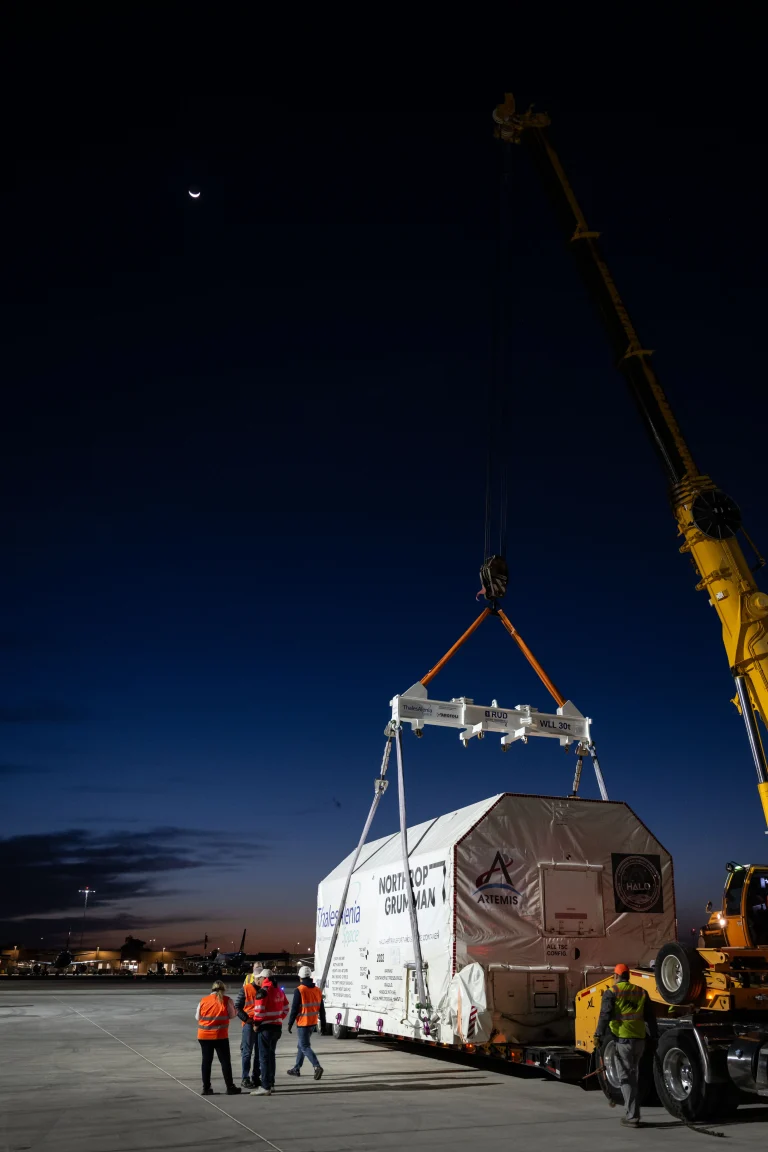Deep Space Station 43 (DSS-43), a 230-foot-wide (70-meter-wide) radio antenna at NASA’s Deep Space Network facility in Canberra, Australia, is seen in this March 4, 2020, image. DSS-43 was more than six times as sensitive as the original antenna at the Canberra complex, so it could communicate with spacecraft at greater distances from Earth. In fact, Canberra is the only complex that can send commands to, and receive data from, Voyager 2 as it heads south almost 13 billion miles (21 billion kilometers) through interstellar space. More than 15 billion miles (24 billion kilometers) away, Voyager 1 sends its data down to the Madrid and Goldstone complexes, but it, too, can only receive commands via Canberra.
As the Canberra facility celebrated its 60th anniversary on March 19, 2025, work began on a new radio antenna. Canberra’s newest addition, Deep Space Station 33, will be a 112-foot-wide (34-meter-wide) multifrequency beam-waveguide antenna. Buried mostly below ground, a massive concrete pedestal will house cutting-edge electronics and receivers in a climate-controlled room and provide a sturdy base for the reflector dish, which will rotate during operations on a steel platform called an alidade.
When it goes online in 2029, the new Canberra dish will be the last of six parabolic dishes constructed under NASA’s Deep Space Network Aperture Enhancement Program, which is helping to support current and future spacecraft and the increased volume of data they provide. The network’s Madrid facility christened a new dish in 2022, and the Goldstone, California, facility is putting the finishing touches on a new antenna.
Image credit: NASA
这张拍摄于2020年3月4日的图像中显示的是位于澳大利亚堪培拉的NASA深空网络(Deep Space Network)设施内的深空天线43号(DSS-43),它是一座直径230英尺(约70米)的射电天线。DSS-43的灵敏度是堪培拉最初建造的天线的六倍多,因此能够与远离地球更遥远的航天器进行通信。事实上,堪培拉是唯一可以向旅行者2号(Voyager 2)发出指令并接收其数据的地面站,而旅行者2号正向南方飞行,目前已进入距离地球近130亿英里(约210亿公里)的星际空间。而距离地球更远、超过150亿英里(约240亿公里)的旅行者1号(Voyager 1)则将数据发送至马德里和戈德斯通地面站,但它也只能通过堪培拉站接收指令。
当堪培拉深空通信中心于2025年3月19日迎来其成立60周年纪念日之际,一座全新的射电天线也正式开建。这座名为深空天线33号(DSS-33)的新设施将是一座直径112英尺(约34米)的多频段波导型天线(multifrequency beam-waveguide antenna)。它的大部分结构将埋设在地下,一个巨大的混凝土基座将容纳先进的电子设备和接收器,并配有恒温控制室,同时为上部反射面天线提供稳固的支撑。反射面将通过安装在一个称为地平台(alidade)的钢结构上进行旋转操作。
当这座新天线于2029年投入运行时,它将成为NASA深空网络孔径增强计划(Deep Space Network Aperture Enhancement Program)下建造的第六座抛物面天线,旨在支持当前和未来的航天器任务,并处理它们带来的日益增长的数据量。该网络在马德里站已于2022年启用了一座新天线,而位于美国加州戈德斯通的地面站也即将完成其新天线的建造工作。
影像来源: NASA







